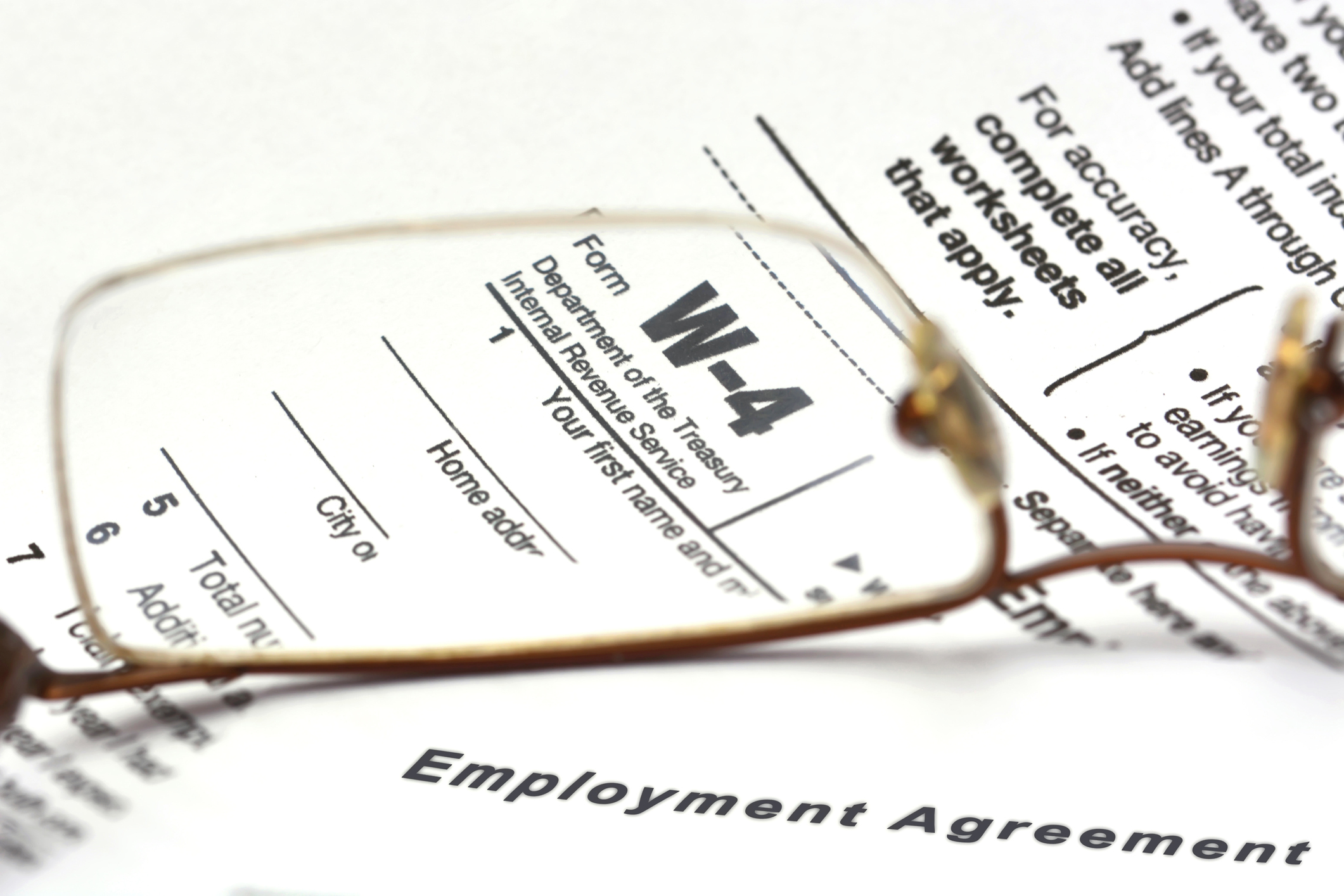
Is It Time to Adjust the Withholding on Your Paychecks?
Picture these two tax return scenarios:
Scenario 1: As you prepare your return on April 14th, the lamp in the corner feels like it is 150 degrees (even though it is an LED bulb), and a drip of sweat lands on your W-2 as you get ready to submit it. You click submit and the software tells you that you owe another 10% of your income in taxes to the IRS.
Or
Scenario 2: It is the week leading up to the deadline and you get an email or phone call from your tax preparer saying, “Looks like you got a big bonus this year. Can we discuss your return before I finalize?”. You find out you owe more money than expected.
After surprises like those, one of the best post-filing moves you can make is to review your tax withholding and adjust it according to your expectations for the coming year. Whether you received a large refund or owed more than expected, adjusting your withholding now can help you stay on track—and avoid tax-time surprises next year.
Why Adjusting Your Tax Withholding Matters
Your employer withholds federal income taxes from each paycheck based on your Form W-4. If too little is withheld, you risk owing the IRS and facing penalties. If too much is withheld, you’re essentially giving the IRS an interest-free loan.
Adjusting your withholding post-tax filing ensures accurate tax payments throughout the year and allows for better cash flow management.
Although the Form W-4 was adjusted back in 2020, there are still some who have not completed the updated form. Once a change kicks you out of the grandfathered “allowance” method of withholding, there is usually a drop in your tax refund or a surprise increase in what you owe the IRS at tax time.
In addition, you might be getting a bonus or bonuses throughout the year that uses the “Supplemental Rate,” which generally defaults to a 22% withholding rate. If you earn over $100k as a single filer or $200k as a married couple, you are over that 22% bracket and under withheld more than likely.
Common Reasons to Adjust Your Withholding
Here are key scenarios that signal it’s time to revisit your withholding. If any of the following apply to you, it may be time to update your Form W-4:
1. You Received a Large Refund
A large refund may feel like a bonus, but it means you’ve overpaid. Reducing your withholding can boost your regular take-home pay instead of waiting for a refund. Remember, the IRS does not pay you interest for over-withholding.
2. You Owed Significant Taxes or Paid Underpayment Penalties
Facing a sizable tax bill on April 15th could be a sign that your current withholding isn’t enough. Increasing your withholding now will help to avoid underpayment next year. Owing some tax on April 15th without penalties isn’t problematic as you don’t owe the IRS interest if you are withholding/paying at least:
- 90% of your current year tax liability equally throughout the year
- 100% (110% if you make more than $75/$150k per year) of your prior year tax amount
3. You receive one-time or irregular bonuses.
Discuss the withholding rate with your payroll department if you’re set to earn a significant bonus. They might default to withholding 22% of your bonus rather than your usual withholding rate. That could lead to a substantial tax bill you don’t have the cash for if you already spent or invested that bonus.
If you’re fortunate enough to receive a bonus exceeding $1 million, the withholding will jump to 37%. While that covers the tax on anything over $1 million, you could still face a $150,000 tax issue due to withholding anything between 22% and 37% on the first million.
4. You Have Multiple Jobs or Freelance Income
When you or your spouse have multiple income sources, it’s easy to under-withhold. Adjusting your withholding helps balance taxes owed across all income streams. If not addressed, you should at least be paying estimated tax payments each quarter to avoid surprises or penalites.
How to Adjust Your Tax Withholding
Updating your withholding is easy. Here’s how:
- Use the IRS Tax Withholding Estimator to calculate your ideal withholding.
- Submit a new Form W-4 to your employer to make changes based on your results.
- Review your paystubs periodically to ensure the new withholding is accurate.
Tax Planning Tip: Don’t Wait Until Year-End
If you anticipate a bonus or income change outside your regular wages, it is best to revisit your withholding amounts right away. You can use the IRS calculator or, even better, reach out to your tax advisor for a personalized projection based on your current year’s situation. Proactively planning for bonus withholding can take the sting out of a last-minute scramble to cover an unexpected tax bill in April. By ensuring the correct amount is withheld up front, you can be confident the money you deposit is free reign.
Final Thoughts
Adjusting your withholding after filing taxes is a proactive way to take control of your finances. It helps you manage cash flow, avoid penalties, and minimize overpayments. If you’re unsure where to start, a tax advisor can help you evaluate your situation and confidently file an updated Form W-4.
Need Help Navigating Your Withholding?
Our team of tax professionals is here to help. Contact us today for a personalized withholding review and year-round tax planning support.